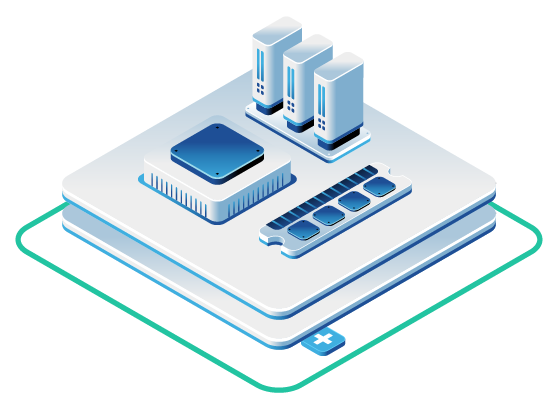Capacity planning in OpenStack ensures your cloud infrastructure meets business needs while managing costs, resources, and performance. Here’s a quick breakdown:
- Why it matters: Optimizes resources, maintains performance stability, and controls costs.
- Who needs it: Cloud architects, IT managers, and operations teams to balance scalability, performance, and budget.
- What to monitor: Key metrics like CPU usage, RAM allocation, storage IOPS, and network bandwidth.
- Tools to use: Ceilometer for metering, Prometheus for real-time monitoring, and predictive analytics for future planning.
- Best practices: Right-size instances, reserve resources for critical workloads, and use auto-scaling tools like Heat or Senlin.
Quick Tip: Platforms like OpenMetal simplify OpenStack setups, offering pre-configured resources for faster deployment and cost efficiency. Test it out yourself with a free trial!
Continue reading for a detailed guide on optimizing OpenStack cloud capacity.
Related Video
Key OpenStack Resource Metrics
Keep tabs on specific metrics to assess system health and plan resources effectively in OpenStack environments.
System Resource Measurements
Monitoring core system resources is the backbone of OpenStack capacity planning. Here are the key metrics to track:
| Resource Type | Key Metrics | Planning Tips |
|---|---|---|
| Compute | CPU core count, overcommit ratio | Keep an eye on CPU cores and overcommit ratios to estimate VM capacity using this formula: (overcommit fraction × cores) / virtual cores per instance |
| Memory | RAM allocation, RAM/core ratio | A common guideline is 8 GB RAM per eight-core server. |
| Storage | IOPS, disk capacity | Determine storage needs with: (flavor disk size × number of instances) |
| Network | Bandwidth per core (Gbps) | Check network throughput for each instance to avoid bottlenecks. |
Defining flavors accurately plays a big role in ensuring resources are allocated efficiently.
Usage Growth Analysis
Understanding usage trends helps predict future resource demands. OpenStack’s built-in tools can help:
- Host-level Monitoring
Theopenstack host showcommand offers a snapshot of resource usage – CPU, memory, and disk – across all instances on a host. This helps spot potential bottlenecks before they affect performance. - Instance-level Diagnostics
Withnova diagnostics, you can dive into detailed metrics for individual instances, such as:- CPU usage trends
- Memory consumption
- I/O operations
- Network bandwidth usage
- Project Usage Statistics
Theopenstack usage listcommand generates reports that include:- Active server counts
- RAM MB-Hours consumed
- CPU Hours utilized
- Disk GB-Hours usage
For a more complete view, use Ceilometer along with collectd to gather both component-specific and system-wide metrics. Pay attention to VM lifecycle trends – longer-running instances typically reduce load on the cloud controller. Also, watch user interactions with nova-api and its database, as frequent instance listing requests can strain performance.
Next, we’ll explore tools designed to turn these metrics into actionable capacity planning insights.
OpenStack Capacity Planning Tools
Using the metrics discussed earlier, these tools transform raw data into practical insights for capacity planning. Proper resource allocation and scaling rely on monitoring and predictive tools to make informed decisions.
Resource Monitoring Systems
When it comes to tracking OpenStack resources, Ceilometer and Prometheus are two standout tools, each playing a distinct role in capacity planning.
Ceilometer focuses on metering virtual resources through several components:
| Component | Function | Metrics Collected |
|---|---|---|
| Central Agent | Monitors VMs and core services | Instance states, resource allocation |
| Hardware Agent | Tracks physical resource usage | CPU, memory, storage utilization |
| Storage DB | Data repository | Historical usage patterns |
| SNMP/IPMI Inspectors | Monitors physical infrastructure | Hardware health and power consumption |
Prometheus, a project supported by the Cloud Native Computing Foundation, offers advanced monitoring with its time-series database. It stands out for:
- Real-time resource tracking with efficient memory and disk use
- Custom metric collection through exporters for tools like Docker and HAProxy
- Advanced querying capabilities using PromQL for in-depth analysis
- Visualization of trends in resource usage
Usage Prediction Methods
Monitoring is just one side of the equation. Predicting future usage trends ensures resources are allocated proactively. Methods include:
- Historical Usage Analysis: Examine past resource consumption to uncover patterns. CERN’s OpenStack deployment, which handles around 300k cores, highlights the importance of thorough monitoring for large-scale setups.
- User Request Patterns: Systems that let users specify their resource needs, including timing, enable automated processing and more accurate forecasting.
- Automated Planning Systems: Tools that create and interpret time-based resource plans can optimize scheduling, reduce costs, and maintain service agreements.
- Time Series Forecasting: Use techniques like ARIMA or Prophet to forecast future resource consumption based on historical data. You can identify seasonal patterns and trends to optimize resource allocation.
- Machine Learning: Employ machine learning algorithms to detect anomalies, outliers, and potential bottlenecks. Implement anomaly detection to proactively address issues before they impact performance.
By analyzing historical data and identifying trends, you can proactively anticipate future resource needs. Tools like Prometheus and Ceilometer can again be used to collect and analyze this data.
Combining monitoring tools with predictive analytics can streamline hardware purchases, automate scaling, and manage expenses effectively.
Resource Management Best Practices
Managing resources effectively in OpenStack requires careful planning and the right tools to strike a balance between performance and cost.
Cost vs Performance Trade-offs
The size and type of resources you choose directly impact both performance and expenses. Storage, in particular, plays a big role in this equation:
| Storage Type | Best Use Case | Performance Impact | Cost Considerations |
|---|---|---|---|
| SSDs/NVMe | Frequent data access, high I/O workloads | High performance, low latency | Higher cost per TB |
| HDDs | Archival and long-term storage | Lower performance, higher latency | Lower cost per TB |
To manage costs while maintaining performance, consider these approaches:
- Instance right-sizing: Regularly analyze resource usage to fine-tune instance sizes, avoiding overprovisioning while meeting performance needs.
- Resource reservation: Dedicate specific resources to critical workloads to maintain steady performance during peak times.
- Network segmentation: Isolate networks to improve efficiency and reduce unnecessary resource usage.
- Spot instances: Leverage spot instances for non-critical workloads to significantly reduce costs.
Comparing Scaling Methods
OpenStack provides several ways to scale resources based on workload requirements. Here’s a quick comparison:
| Scaling Method | Benefits | Considerations |
|---|---|---|
| Heat AutoScalingGroup | Automatically adjusts resources based on templates | Needs precise metric configuration |
| Senlin Cluster | Offers detailed control through policies | Requires a more complex setup |
For effective auto-scaling, make sure to:
- Set proper cooldown periods to avoid rapid scaling fluctuations.
- Define clear minimum and maximum instance limits.
- Build applications that can handle horizontal scaling.
- Use monitoring tools like Monasca or Ceilometer to guide scaling decisions.
These methods should align with your hardware planning to ensure smooth capacity increases.
Hardware Planning Timeline
Effective hardware planning involves several steps to support infrastructure scalability:
- Hardware Selection: Pick compute nodes with CPUs that support migration, while allowing flexibility in other specifications.
- Deployment Strategy: Use automated deployment tools and perform burn-in testing to ensure reliability.
- Capacity Tracking: Use OpenStack’s monitoring tools to track resource usage, predict future needs, and assign weights to object storage nodes.
The nova-scheduler service helps manage hardware differences, allowing gradual infrastructure upgrades. This approach lets you incorporate newer, more efficient hardware without disrupting existing systems.
By following these practices, you can plan capacity efficiently, keeping costs under control while optimizing resource use.
Cloud Provider Solutions
External cloud solutions make infrastructure management simpler by handling deployment, management, and resource allocation. This eliminates the need for businesses to build and maintain their own complex systems.
OpenMetal’s Cloud Services
We offer a streamlined way to deploy OpenStack powered private clouds while simplifying capacity planning. Our Cloud Core platform provides a hyper-converged setup with pre-configured compute, storage, and networking resources, allowing for quick deployment of production-ready environments.
Here’s how OpenMetal supports capacity planning:
| Feature | Benefit | Impact on Capacity Planning |
|---|---|---|
| 45-Second Deployment | Resources ready instantly | Speeds up capacity expansion |
| Transparent Pricing | Fixed costs with up to 5-year agreements and generous included egress | Easier budget management |
| Pre-configured Resources | Plug-and-play setup | Simplifies resource allocation |
Customers report an average of 50% cost savings compared to public cloud alternatives, thanks to our open source model that avoids licensing fees and allows for better control and resource allocation.
“OpenMetal Cloud provides on-demand private infrastructure, which brings cloud fundamentals like elasticity and usage billing to the cloud deployment itself. It’s awesome to see OpenMetal’s latest product use OpenStack to combine the benefits of public cloud and managed private cloud, powered by open infrastructure.” – Thierry Carrez, General Manager @ OpenInfra Foundation
For those considering OpenStack for capacity planning, OpenMetal provides:
- Proof of Concept (PoC) trials to evaluate the platform
- Cloud Administrator Guides for operational support
- Integrated monitoring for real-time resource tracking
- Flexible pricing and support options, including hardware and assisted management
The platform’s “Day 2 ready” design minimizes emergency fixes and simplifies ongoing maintenance, allowing teams to focus on strategic planning instead of managing infrastructure.
“Public clouds are really too expensive. You don’t have to spend that level of investment with a public cloud. The answer is a private cloud. But you need a trusted expert that you can rely on, and that trusted expert is OpenMetal. With OpenMetal you’re going to have huge savings, but you need an expert to navigate the waters because this technology is very different from the public cloud. So that’s why I would tell people to go with OpenMetal.” – Tom Fanelli, CEO & Co-Founder @ Convesio
Summary
Effective capacity planning for OpenStack clouds requires a structured approach to managing and monitoring resources. By focusing on measurable data and proven practices, organizations can better align their infrastructure with current demands and future growth.
Main Points Review
Resource Metrics and Monitoring
Capacity planning begins with collecting and analyzing critical metrics. Here’s a breakdown of key metrics and their influence on planning:
| Metric Category | Key Measurements | Planning Impact |
|---|---|---|
| Compute Resources | CPU cores, RAM/core ratio | Helps define VM density and overall performance |
| Storage Performance | Spindles/core, IOPS | Impacts data access speeds and workload handling |
| Network Capacity | Gbps/core, bandwidth use | Determines scalability and service quality |
| Instance Metrics | VM creation/termination rates | Supports API and database server sizing decisions |
Resource Management Strategies
Horizontal scaling is often the go-to strategy, as it involves adding more servers rather than upgrading existing ones. This method not only boosts performance and simplifies maintenance but also improves fault tolerance and makes forecasting easier. Using this approach, teams can better manage resources and prepare for future demands.
Monitoring and Tools
Modern tools play a vital role in tracking and optimizing resource usage. Tools like os-capacity and osreports provide valuable insights by leveraging features such as Prometheus exporters for real-time monitoring and tenant-specific utilization reports. These tools also help identify usage patterns and growth trends.
Read More on the OpenMetal Blog


































